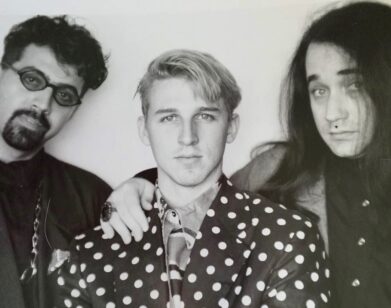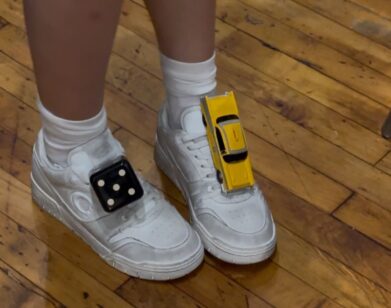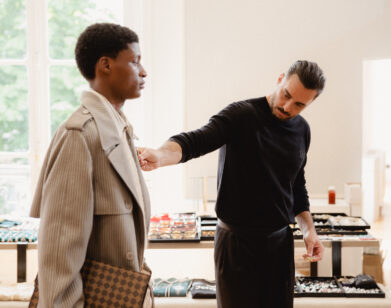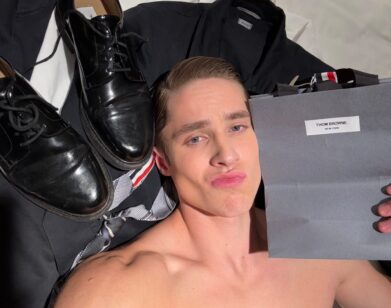Cathy Horyn
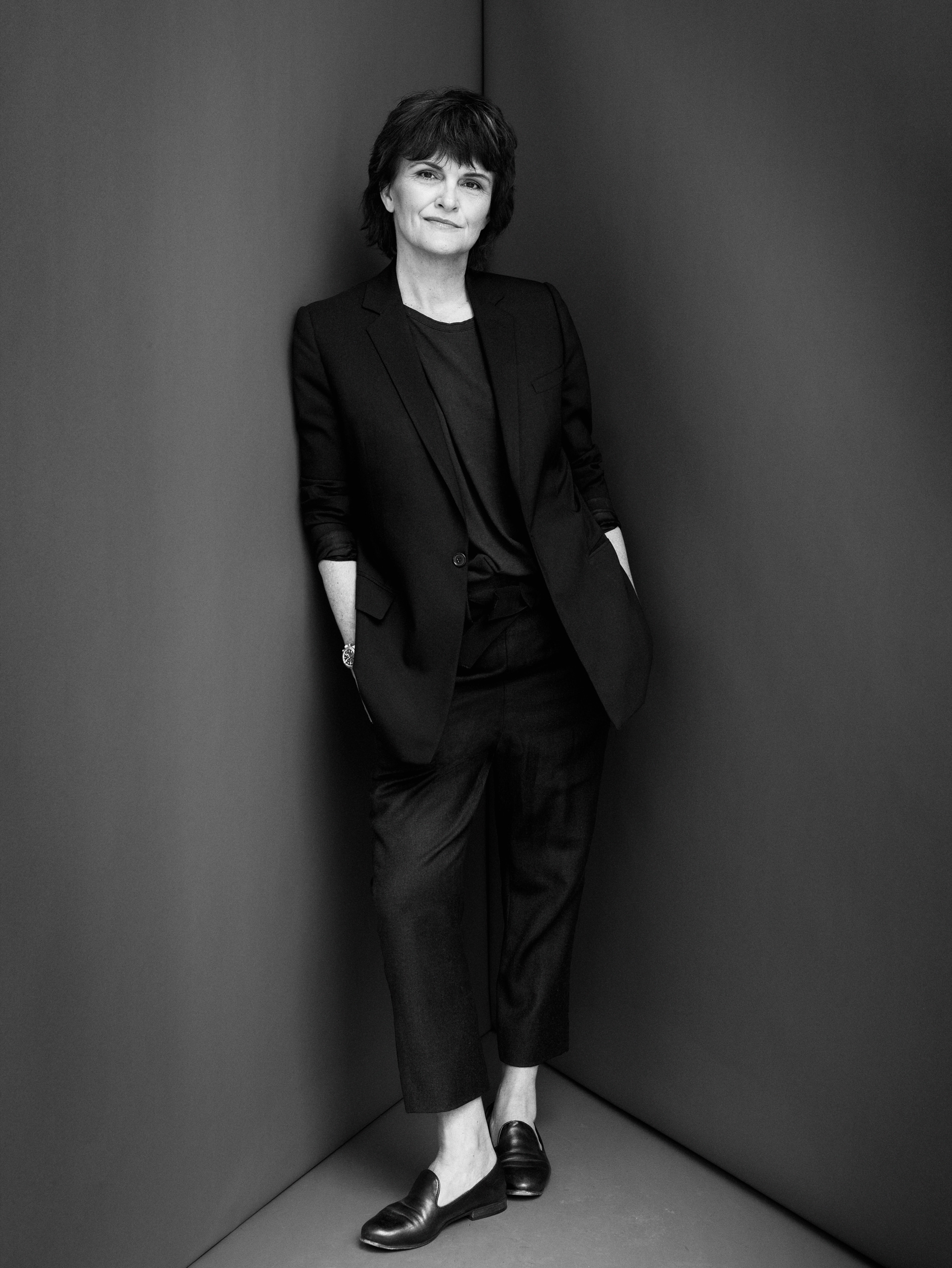
CATHY HORYN: Fashion Critic, The New York Times HOME BASE: New York City. PROVENANCE: Coshocton, Ohio. PAST: Fashion critic at The Detroit News and The Washington Post; contributing editor at Vanity Fair. FIRST BEAT: Covered the Portsmouth, Virginia, school board for the Norfolk Ledger-Star. FIRST TRIP TO THE COLLECTIONS: Milan, February 1986. “It was a little bit like coming into the school cafeteria and having to sit in one of the lonely spots.” GOOD IDEA: “It would be great if they had something like Google Earth for fashion, which operated in the same way, except you could just kind of zoom in on whoever is young and interesting.”
STEPHEN MOOALLEM: Describe the landscape of fashion journalism when you were starting out. What kind of world were you coming into?
CATHY HORYN: I would say that there was very little criticism in 1986. That was the main thing. Bernadine Morris was in place at The New York Times, and she would give people a gentle slap if she didn’t like something, or she’d ignore it. Nina Hyde was at The Washington Post, and she was very much a reporter. She had close associations with a lot of designers and was very interested in the process of fashion and the making of clothes. But there wasn’t really a critical voice. There was Kennedy Fraser at The New Yorker. I don’t know if Kennedy was still writing for The New Yorker in 1986, but her writing certainly had a big impact on me—as well as the New Yorker way of taking a little bit more distance, but also being critical of things. So that was something that I noticed. Also, people wrote in much more detail. They really described the clothes and the collections. They were very conscious of their reader back in Detroit or Washington or Atlanta—that that person wanted to know what was happening and maybe wasn’t seeing Elsa Klensch on CNN . . . Then, of course, there were a lot of buyers there from the specialty stores and the big department stores. So you did a mixture of interviewing the buyers and going to the collections. I was way too far down the totem pole to even think about going to see the European designers—I don’t even remember going backstage for the first couple of years. But even though the process of transmitting stories was more cumbersome, you still had more time. You had time to go shopping. They used to serve lunch at the Fiera in Milan. The designers basically bought the lunch—it was like a meal-ticket situation, a buffet lunch. But it was an amazing lunch. All the journalists would be in there, as well as a lot of the buyers, and you would really get to know people. That’s where I first met Suzy Menkes. So you could take time and talk.
MOOALLEM: What about how you were writing about fashion? How did you begin to think about that?
HORYN: Well, I was already writing critically at The Detroit News, but when I went to The Washington Post in 1990, the Style section there at the time was a real kick-ass place. Whether it was Tom Shales, or Paul Richards doing art criticism, or Paul Hendrickson doing feature stories, or Martha Sherrill doing features, everybody had a point of view. So it was a natural place to be a critic. Washington is also always about the conversation, whether it’s about politics or the Redskins or fashion or the social world, and people don’t necessarily need to know the details. They don’t need to buy the clothes. They just want to be informed. So I think I got to be aware that people were not interested in the details of the clothes as much. They wanted you to tell them what you thought and “What does it mean?” and “Why should I care?” So you didn’t necessarily have to dwell, in the obligatory sense, on covering every collection—although I sometimes feel like I did. But you could be more selective about it. And, of course, jump ahead 20 years, and I’m very selective about what I write about, and whom I write about, and how much I write about somebody.
MOOALLEM: Do you think that the person-to-personness of fashion back then also had something to do with the fact that it was still more of a traditionally entrepreneurial business?
HORYN: Probably. I used to think that the great years for covering fashion were the ’60s—and not because of the miniskirt. It was because of New York. I always thought it would be great to do a book on that period, from 1962 or 1963 up to 1973. You could do a kind of crazy book that looked at the lives of Bill Blass, Oscar [de la Renta], Halston, Geoffrey Beene, Jacques Tiffeau—who was a very important designer in New York in the ’60s and a real wild man, but with incredible taste. And then you could look at the people who came along, like Eugenia Sheppard and Diana Vreeland, and the lives of certain retailers who were important, and the money guys, like Ben Shaw, because the ’60s in America was all about the big manufacturers. Then you have the ’70s, which is really about the big entrepreneurial bust-out. You’ve got Calvin Klein and Barry Schwartz starting up. Oscar is now running his own shop. Bill Blass is expanding into all those licenses. You’ve got the Europeans doing the same thing, and the Valentinos and the Saint Laurents. There was also less marketing involved. I won’t say it was about more creative stuff—it was just that the assumption was that it was creative. You didn’t need to put brackets around the designers who were conceptual or ironic or postmodern. There was an actuality about everything—and by that, I mean that it just was. There was always smoke-and-mirrors in fashion, but back then, you went in to see a line, and there it was . . .
MOOALLEM: So when did things start to change?
HORYN: When I got to Vanity Fair in 1995, I was still writing about fashion, but I was also writing about Hollywood and music, so I wasn’t paying as much attention. Then I came to The New York Times at the end of ’98, so I started covering the collections again in ’99, and at that point, the entire industry was in transition with the emergence of Gucci Group and PPR and LVMH and Richemont. They were acquiring all those houses. So there was this bigger, sharper branding approach to fashion, which I also think is interesting. It’s not bad or good—it’s just different.
MOOALLEM: So, for you, what are the some of the big story lines in fashion right now?
HORYN: Well, one of the big ones is going to be the influence or the impact that Raf Simons at Dior has on other aspects of the industry—and possibly also at the contemporary fashion level. We saw what happened when he started doing color at Jil Sander—that had an almost immediate effect of injecting far more color into the industry. It was a simultaneous thing, with some of the jeans makers also getting in, but those guys were looking at ready-to-wear-the jeans makers have told me that. So I think Raf is going to have a pretty interesting impact on ready-to-wear, and people are going to be looking at what he does. I think Hedi Slimane over at YSL is going to be interesting to watch, too. That company has gone through so many ups and downs in the last 12 years, if you look back to the Alber Elbaz era and Gucci taking over. So that’s going to be interesting. I think that in New York, we’re going to be watching what’s happening with Proenza Schouler now that they have new partners and a new store. Then you have China. There are a lot of Chinese-American designers and Chinese designers who have had an impact a little bit on the American market, but I think it’s going to be interesting to watch if, over time, somebody can emerge from China who is based in China, and whether they come and show in Paris, like Rei Kawakubo or Yohji Yamamoto did. I think Paris will still be the anchor for all of that because it’s so well organized, and it is what it is. It’s also going to be interesting to watch the transformation of brick-and-mortar stores. Someone mentioned this the other day, and I think it’s true: We’ve seen such a decline of merchants in this country. We have a lot of stores, but we don’t have a lot of merchants. I think it’s something to just keep in the back of your mind in terms of where that might go in the next five or ten years as brands become more comfortable with selling online. And then there is Vogue and what it has become. It’s not just a magazine. Through Anna [Wintour], it has a reach into so many other areas. We all know the things that they do, but it’s interesting, too, in that you wonder if somehow a store can take up that approach.
MOOALLEM: Are there any holes or blind spots in fashion journalism that you’d like to see filled?
HORYN: I think the biggest hole is in criticism. I think there should be more informed criticism. Part of the problem is that in the ’90s, the newspapers started losing their A-section and department-store advertising, and that paid for fashion writers and for the big feature space. You look at the kind of coverage that the Houston and the Dallas papers used to give to fashion: at one point, there were four or five reporters from Texas at the shows—and that’s gone now, by the way. But those newspapers were training grounds, just like The Detroit News was for me. You’d get people who could be in the job for a long time and who understood the beat. I think that’s what’s missing today, in a way. A lot of people come into writing about fashion because they love fashion, but they don’t necessarily have the journalism skills. I’m a critic at the Times, but I’ve always felt that I’m just as much a reporter, and so I should do magazine pieces and profiles and what we call “Critic’s Notebooks” and reviews and the whole mixed bag. So I think there’s room. And then I also think there’s ample opportunity for people to do more reporting about the fashion companies and what’s happening on the inside. There’s lot of reporting about products and events. We all do that pretty well, and maybe that’s what a lot of readers want—there is that argument to be made for that. But because there is so much general commentary about fashion, there might be an opportunity for someone to do more investigative-type reporting about the industry. You could do it on a blog. It would be kind of lonely for a while [laughs] . . . You’d have to be very committed to asking questions, and you couldn’t be a front-row presence. You couldn’t care about that. It wouldn’t be about that. But Paris and New York have a lot of people working in houses, and it’s not hard to find out what’s going on. That would be a great blog. I think that the industry, over time, would turn to that blog out of pure interest in knowing what’s going on. As long as the person doing it was credible and accurate, I think there’s room for that.
For more on The Observers, click here.


